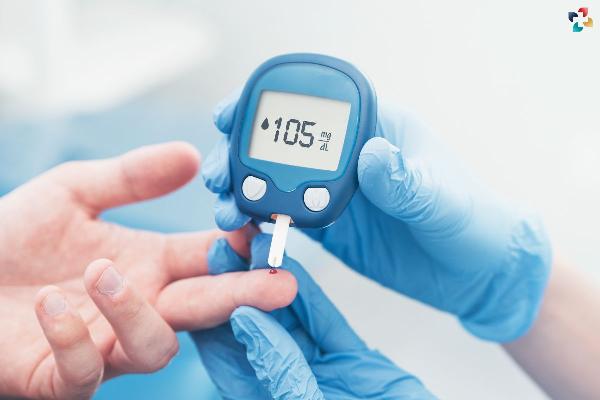Understanding Postprandial Blood Sugar: A Comprehensive Guide

Strong 8k brings an ultra-HD IPTV experience to your living room and your pocket.
Managing blood sugar levels is crucial for overall health, particularly for those with diabetes. One key aspect of blood sugar management is understanding postprandial blood sugar, which refers to blood sugar levels after eating. In this article, we’ll delve into the significance of postprandial blood sugar, how it impacts health, and ways to manage it effectively.
What is Postprandial Blood Sugar?
Postprandial blood sugar (PPBS) is the measure of glucose in the blood after a meal. Typically, it is measured one to two hours after eating, as this is when blood sugar levels peak. Monitoring PPBS is essential because it provides insights into how the body is processing sugar and how well the pancreas is producing insulin.
Why is Postprandial Blood Sugar Important?
High postprandial blood sugar levels can indicate problems with insulin production or insulin resistance, both of which are key features of diabetes. Consistently high PPBS levels can lead to various complications, including:
Postprandial Blood Sugar: Levels, Tests, and What They Mean | The Lifesciences Magazine
Cardiovascular Disease: High blood sugar levels can damage blood vessels and the nerves that control the heart, increasing the risk of heart disease and stroke.
Nerve Damage: Known as diabetic neuropathy, this condition can cause pain, tingling, and loss of sensation, usually in the hands and feet.
Kidney Damage: High blood sugar can damage the kidneys’ filtering system, leading to chronic kidney disease or kidney failure.
Eye Damage: Diabetes can cause damage to the blood vessels in the retina, potentially leading to blindness.
Understanding and controlling PPBS is critical for preventing these and other complications.
Factors Influencing Postprandial Blood Sugar Levels
Several factors can influence postprandial blood sugar levels:
Type of Food Consumed: Carbohydrates have the most significant impact on blood sugar levels. Foods high in refined sugars and simple carbohydrates can cause rapid spikes in blood sugar.
Portion Size: Larger meals can lead to higher PPBS levels as the body has to process a greater amount of glucose.
Timing of Meals: Eating at irregular times can disrupt the body’s natural insulin production and glucose processing.
Physical Activity: Exercise helps muscles use glucose more efficiently, reducing PPBS levels.
Medication: For those with diabetes, medications like insulin and oral hypoglycemics can help manage PPBS levels.
Stress: Stress hormones can increase blood sugar levels, making PPBS management more challenging.
How to Measure Postprandial Blood Sugar?
Postprandial Blood Sugar: Levels, Tests, and What They Mean | The Lifesciences Magazine
Measuring PPBS is straightforward and involves a few simple steps:
Preparation: Ensure you have a reliable glucose meter, test strips, and a lancet device.
Timing: Check your blood sugar one to two hours after starting a meal.
Procedure: Wash your hands, insert a test strip into the glucose meter, prick your fingertip with the lancet device, and apply a drop of blood to the test strip. The meter will display your blood sugar level.
It’s essential to follow your healthcare provider’s guidelines on the frequency and timing of blood sugar tests.
Recommended Postprandial Blood Sugar Levels
The American Diabetes Association (ADA) provides general guidelines for PPBS levels:
For people without diabetes: Less than 140 mg/dL (7.8 mmol/L) one to two hours after eating.
For people with diabetes: Less than 180 mg/dL (10.0 mmol/L) one to two hours after eating.
These targets may vary based on individual health conditions and should be personalized in consultation with a healthcare provider.
Strategies to Manage Postprandial Blood Sugar
Effective management of PPBS involves a combination of dietary choices, physical activity, and medication:
1. Dietary Choices:
Carbohydrate Counting: Track carbohydrate intake to manage blood sugar levels better.
Glycemic Index: Choose foods with a low glycemic index (GI) as they have a slower impact on blood sugar levels.
Balanced Meals: Include a mix of carbohydrates, proteins, and healthy fats to slow down glucose absorption.
2. Physical Activity:
Regular Exercise: Aim for at least 150 minutes of moderate aerobic activity per week, along with strength training exercises.
Post-Meal Walks: Taking a walk after meals can help lower PPBS levels.
3. Medication Management:
Follow Prescriptions: Adhere to the prescribed medication regimen.
Monitor and Adjust: Regularly check blood sugar levels and consult with healthcare providers to adjust medications as needed.
4. Lifestyle Modifications:
Stress Management: Practice stress-reducing activities like yoga, meditation, or deep-breathing exercises.
Adequate Sleep: Ensure sufficient and quality sleep as poor sleep can affect blood sugar levels.
The Role of Technology in Managing Postprandial Blood Sugar
Postprandial Blood Sugar: Levels, Tests, and What They Mean | The Lifesciences Magazine
Advancements in technology have made managing PPBS more accessible and efficient:
Continuous Glucose Monitors (CGMs): These devices provide real-time blood sugar readings throughout the day and night, helping identify trends and make timely adjustments.
Smartphone Apps: Numerous apps can track food intake, exercise, and blood sugar levels, providing a comprehensive overview of diabetes management.
Insulin Pumps: These devices deliver a continuous supply of insulin and can be programmed to release extra insulin at mealtimes.
The Future of Postprandial Blood Sugar Management
Research and innovation continue to advance the field of diabetes management. Some promising developments include:
Artificial Pancreas Systems: These systems automate insulin delivery based on continuous glucose monitoring, mimicking the function of a healthy pancreas.
Improved Medications: New medications are being developed to target different aspects of blood sugar control, offering more personalized and effective treatments.
Nutritional Science: Ongoing research into the glycemic index and the impact of various foods on blood sugar levels is providing more detailed dietary recommendations.
Take Back the Control to Your Health: Self-monitoring Blood Sugar for Better Health
A high or low blood sugar level can cause various long-term or short-term health issues. Healthcare and science can help us prevent these health issues. A low sugar level is called hypoglycemia. Likewise, a high blood sugar level is called hyperglycemia.
Read More
Conclusion
Understanding and managing postprandial blood sugar is crucial for maintaining overall health, particularly for individuals with diabetes. By monitoring PPBS levels, making informed dietary choices, engaging in regular physical activity, and utilizing technology, it is possible to achieve better blood sugar control and reduce the risk of complications. Always consult with healthcare providers to tailor strategies to individual needs and stay informed about the latest advancements in diabetes management.
Note: IndiBlogHub features both user-submitted and editorial content. We do not verify third-party contributions. Read our Disclaimer and Privacy Policyfor details.


